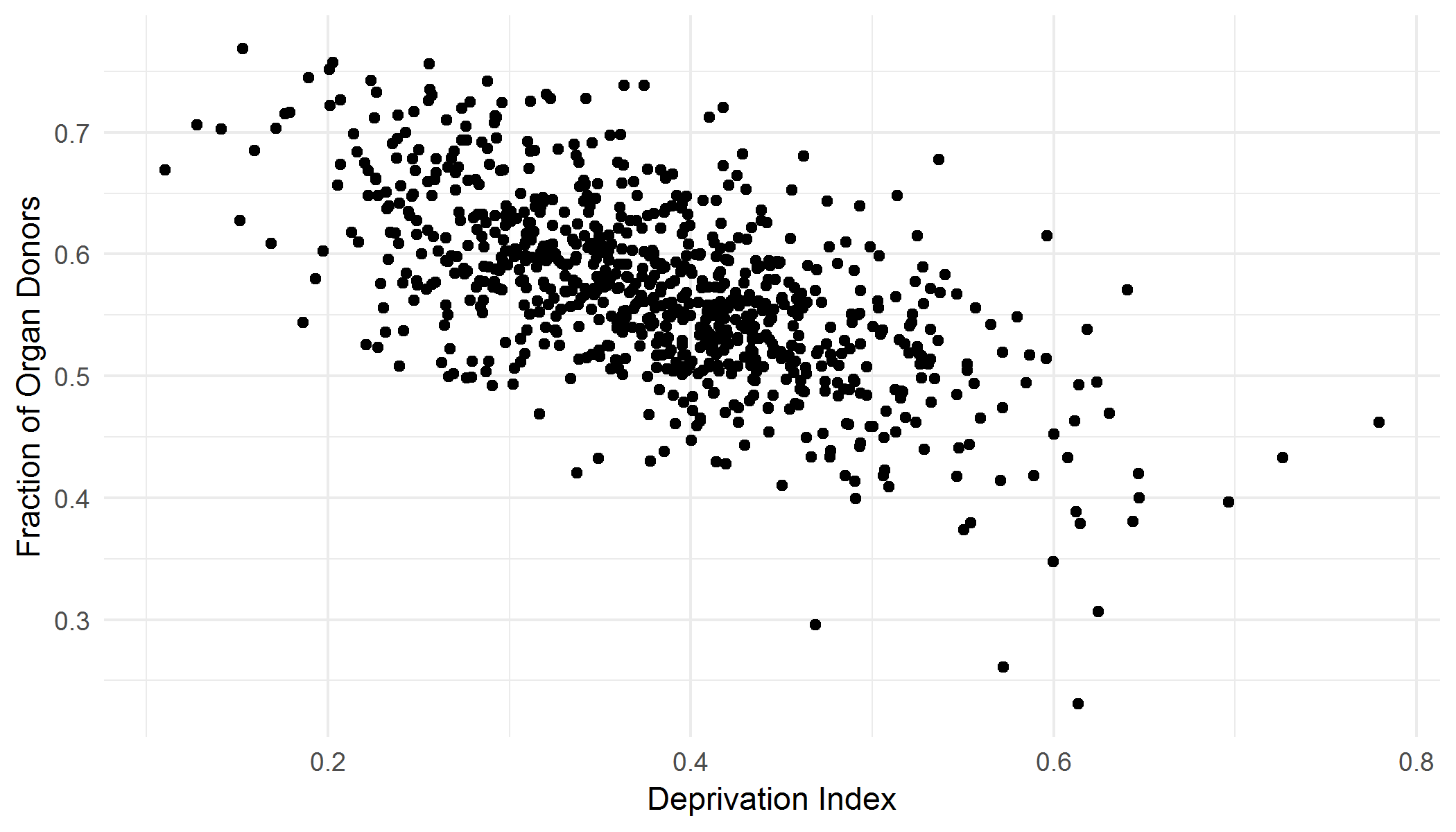Neighborhood Deprivation is Associated with Decreased Rates of Organ Donor Designation
1Cincinnati Children's Hospital Medical Center, Cincinnati, OH, 2Icahn School of Medicine at Mount Sinai, New York, NY, 3University of California San Francisco, San Francisco, CA
Meeting: 2019 American Transplant Congress
Abstract number: D219
Keywords: Donation, Public policy
Session Information
Session Name: Poster Session D: Non-Organ Specific: Public Policy & Allocation
Session Type: Poster Session
Date: Tuesday, June 4, 2019
Session Time: 6:00pm-7:00pm
 Presentation Time: 6:00pm-7:00pm
Presentation Time: 6:00pm-7:00pm
Location: Hall C & D
*Purpose: Only half of adults in the United States are designated as organ donors on their state driver’s license or identification card. We leveraged data from all driver’s license and identify card holders within the Oregon Bureau of Motor Vehicles (BMV) registry to determine if an area-level measure of neighborhood deprivation predicts the rate of organ donor designation (ODD).
*Methods: This was a cross-sectional study. Data were obtained from Oregon BMV on all driver’s license and identify card holders. Registrants were excluded if addresses were unable to be geocoded with sufficient precision or if registrants were <15 years of age. The primary exposure variable, derived from BMV registrant addresses, was a validated index of neighborhood deprivation quantified using data from the US Census Bureau. The neighborhood deprivation index, measured at the census tract level, has a range of [0,1]. Values closer to 1 indicate greater deprivation (i.e., lower socioeconomic status). The primary outcome variable was the census-tract level rate of ODD. This rate was derived from the number of designated organ donors within a given census tract divided by the total number of individuals within the BMV registry who had an address within that census tract.
*Results: Data were obtained from a total of 3,421,201 state license registrants. 2.1% and 0.9% of registrants were excluded for insufficient geocoding precision and for being <15 years of age, respectively. In this sample, the deprivation index ranged from 0 - 0.78 with a mean of 0.38 (SD 0.10). 56.7% of the sample registrants were designated as organ donors. The range of ODD across tracts was 13% - 77% with a mean of 57% (SD 8%). Greater deprivation was associated with lower ODD rate (Figure 1). Linear regression demonstrated that for every 0.1 increase in the deprivation index (equating to a 10% increase in deprivation), the ODD rate decreased 4.9% (95% CI: 4.4% - 5.2%).
*Conclusions: More neighborhood socioeconomic deprivation was strongly associated with decreased rates of organ donor designation. This study demonstrates that area-based socioeconomic measures can successfully be used to identify segments of the population less likely to register as organ donors. Further work to understand the relationship between neighborhood-level factors and organ donor designation may inform targeted campaigns that increase organ availability in the United States.
To cite this abstract in AMA style:
Wadhwani SI, Bucuvalas J, Brokamp C, Bhuiyan MA, Lai JC, Beck A. Neighborhood Deprivation is Associated with Decreased Rates of Organ Donor Designation [abstract]. Am J Transplant. 2019; 19 (suppl 3). https://atcmeetingabstracts.com/abstract/neighborhood-deprivation-is-associated-with-decreased-rates-of-organ-donor-designation/. Accessed December 27, 2025.« Back to 2019 American Transplant Congress

